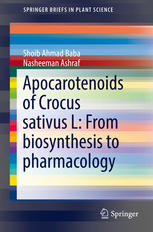

Most ebook files are in PDF format, so you can easily read them using various software such as Foxit Reader or directly on the Google Chrome browser.
Some ebook files are released by publishers in other formats such as .awz, .mobi, .epub, .fb2, etc. You may need to install specific software to read these formats on mobile/PC, such as Calibre.
Please read the tutorial at this link: https://ebookbell.com/faq
We offer FREE conversion to the popular formats you request; however, this may take some time. Therefore, right after payment, please email us, and we will try to provide the service as quickly as possible.
For some exceptional file formats or broken links (if any), please refrain from opening any disputes. Instead, email us first, and we will try to assist within a maximum of 6 hours.
EbookBell Team

0.0
0 reviewsThis book is a product of years of research on saffron biology. It intends to give a broad but concise overview of the various aspects of apocarotenoid biosynthesis in Crocus sativus, its regulation and pharmacology .
Crocus sativusL. of family Iridaceae is an important medicinal plant. The dried stigma of C. sativus flower is considered as the world's costliest spice. Saffron is the sources of unique carotenoid derived molecules called apocarotenoids which include crocin, crocetin, picrocrocin and safranal. These molecules are synthesized in the tissue and developmental stage specific manner. Besides providing colour, aroma and flavour to the spice, these molecules have tremendous medicinal importance.
The book uncovers major concepts of apocarotenoids biosynthesis and provides deeper and more complete understanding about their biotechnological and pharmacological applications.
The book is divided into three sections –
The first section provides a general introduction of C. sativus, its apocarotenoids, their biosynthesis, regulation and transport. Second section provides information about the carotenoid cleavage dioxygenases (CCDs) which are the key players in apocarotenoid biosynthesis. The classification of plant CCDs, their structure, reaction mechanism, biotechnological application are thoroughly discussed. The final section deals with the major pharmacological properties of C. sativus apocarotenoids, ranging from their role as anticancer to their utility as neuroprotective molecules.
This is a one of its kind book on Crocus sativus. It will be useful for the researchers working on Crocus sativus, students and also practitioners involved in extraction and bio-synthesis of the useful medical components.